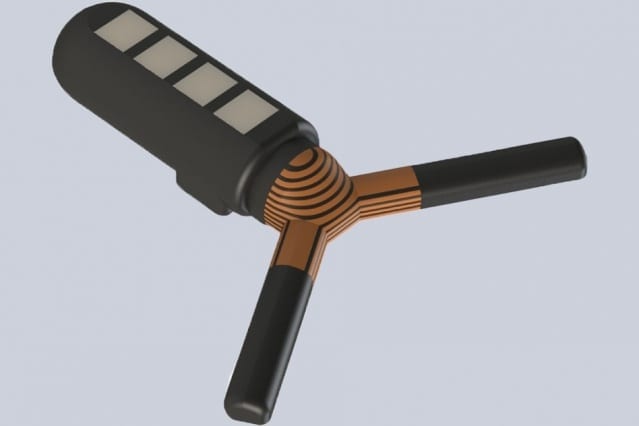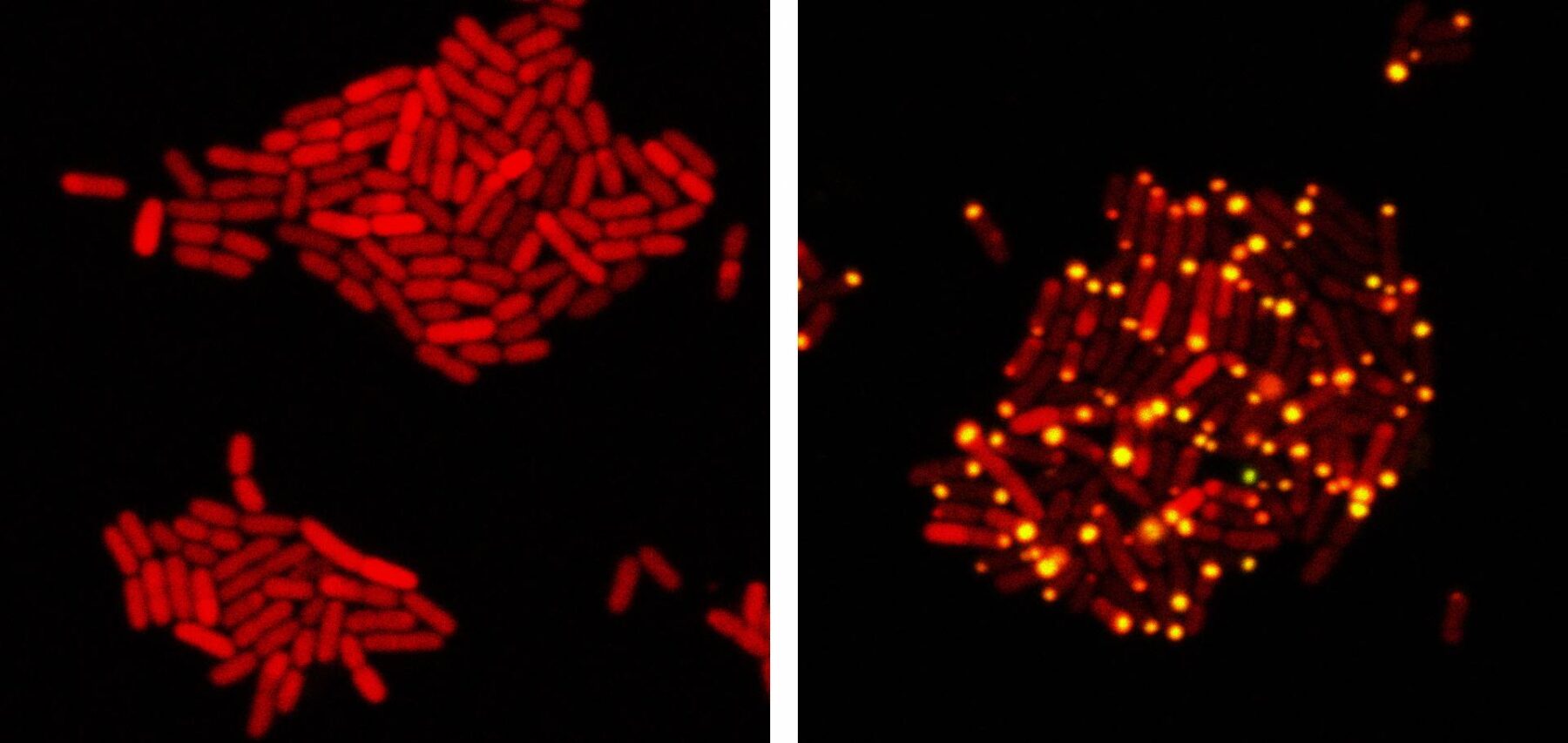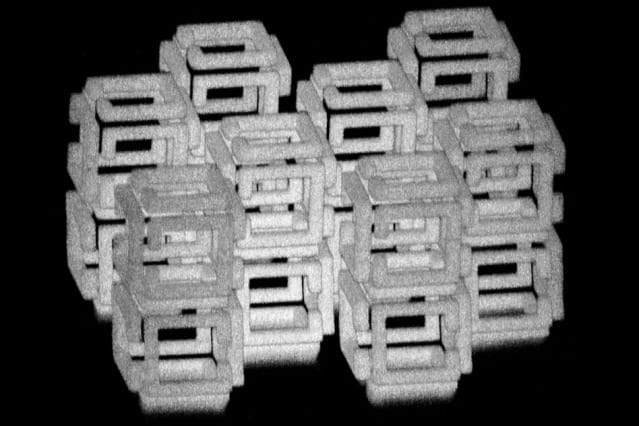
Image courtesy of the researchers
Ingestible capsule can be controlled wirelessly
Researchers at MIT, Draper, and Brigham and Women’s Hospital have designed an ingestible capsule that can be controlled using Bluetooth wireless technology. The capsule, which can be customized to deliver drugs, sense environmental conditions, or both, can reside in the stomach for at least a month, transmitting information and responding to instructions from a user’s smartphone.
The capsules, manufactured using 3-D-printing technology, could be deployed to deliver drugs to treat a variety of diseases, particularly in cases where drugs must be taken over a long period of time. They could also be designed to sense infections, allergic reactions, or other events, and then release a drug in response.
“Our system could provide closed-loop monitoring and treatment, whereby a signal can help guide the delivery of a drug or tuning the dose of a drug,” says Giovanni Traverso, a visiting scientist in MIT’s Department of Mechanical Engineering, where he will be joining the faculty in 2019.
These devices could also be used to communicate with other wearable and implantable medical devices, which could pool information to be communicated to the patient’s or doctor’s smartphone.
“We are excited about this demonstration of 3-D printing and of how ingestible technologies can help people through novel devices that facilitate mobile health applications,” says Robert Langer, the David H. Koch Institute Professor and a member of MIT’s Koch Institute for Integrative Cancer Research.
Langer and Traverso are the senior authors of the study, which appears in the Dec. 13 issue of Advanced Materials Technologies. Yong Lin Kong, a former MIT postdoc who is now an assistant professor at the University of Utah, is the paper’s lead author.
Wireless communication
For the past several years, Langer, Traverso, and their colleagues have been working on a variety of ingestible sensors and drug delivery capsules, which they believe would be useful for long-term delivery of drugs that currently have to be injected. They could also help patients to maintain the strict dosing regimens required for patients with HIV or malaria.
In their latest study, the researchers set out to combine many of the features they had previously developed. In 2016, the researchers designed a star-shaped capsule with six arms that fold up before being encased in a smooth capsule. After being swallowed, the capsule dissolves and the arms expand, allowing the device to lodge in the stomach. Similarly, the new device unfolds into a Y-shape after being swallowed. This enables the device to remain the stomach for about a month, before it breaks into smaller pieces and passes through the digestive tract.
One of these arms includes four small compartments that can be loaded with a variety of drugs. These drugs can be packaged within polymers that allow them to be released gradually over several days. The researchers also anticipate that they could design the compartments to be opened remotely through wireless Bluetooth communication.
The device can also carry sensors that monitor the gastric environment and relay information via a wireless signal. In previous work, the researchers designed sensors that can detect vital signs such as heart rate and breathing rate. In this paper, they demonstrated that the capsule could be used to monitor temperature and relay that information directly to a smartphone within arm’s length.
“The limited connection range is a desirable security enhancement,” Kong says. “The self-isolation of wireless signal strength within the user’s physical space could shield the device from unwanted connections, providing a physical isolation for additional security and privacy protection.”
To enable the manufacturing of all of these complex elements, the researchers decided to 3-D print the capsules. This approach allowed them to easily incorporate all of the various components carried by the capsules, and to build the capsule from alternating layers of stiff and flexible polymers, which helps it to withstand the acidic environment of the stomach.
“Multimaterials 3-D printing is a highly versatile manufacturing technology that can create unique multicomponent architectures and functional devices, which cannot be fabricated with conventional manufacturing techniques,” Kong says. “We can potentially create customized ingestible electronics where the gastric residence period can be tailored based on a specific medical application, which could lead to a personalized diagnostic and treatment that is widely accessible.”
Early response
The researchers envision that this type of sensor could be used to diagnose early signs of disease and then respond with the appropriate medication. For example, it could be used to monitor certain people at high risk for infection, such as patients who are receiving chemotherapy or immunosuppressive drugs. If infection is detected, the capsule could begin releasing antibiotics. Or, the device could be designed to release antihistamines when it detects an allergic reaction.
“We’re really excited about the potential for gastric resident electronics to serve as platforms for mobile health to help patients remotely,” Traverso says.
The current version of the device is powered by a small silver oxide battery. However, the researchers are exploring the possibility of replacing the battery with alternative power sources, such as an external antenna or stomach acid.
The researchers are also working on developing other kinds of sensors that could be incorporated into the capsules. In this paper, they tested the temperature sensor in pigs, and they estimate that within about two years, they may be able to start testing ingestible sensors in human patients. They have launched a company that is working on developing the technology for human use.
Learn more: Ingestible capsule can be controlled wirelessly
The Latest on: Ingestible technologies
[google_news title=”” keyword=”ingestible technologies” num_posts=”10″ blurb_length=”0″ show_thumb=”left”]
via Google News
The Latest on: Ingestible technologies
- MIT Technology Reviewon May 4, 2024 at 3:06 am
Our editors picked the 50 companies that are smartest about how they combine innovative technology with an effective business model. Some are new companies and startups, while others have ...
- Silicon Valley Technology Newson May 2, 2024 at 11:45 pm
Ranked by Sq. ft. of data center space in Silicon Valley Ranked by 2023 funding total Ranked by Most current revenue Apr 30, 2024, 1:26 pm PDT Technology Protecting Blue Whales and Blue Skies ...
- 10 Best Technology Mutual Funds Of May 2024on May 2, 2024 at 4:03 am
Commissions do not affect our editors' opinions or evaluations. Over the past 10 years, the technology sector has enjoyed stratospheric performance. You can’t even match the tech funds category ...
- Ingestible wellness proves an easy pill to swallowon April 29, 2024 at 5:00 pm
Ever since the days of patent medicines in the late 19th century, consumers looking for ingestible wellness enhancers — whether in the form of tinctures or pills — have dealt with a barrage of false ...
- Internet of Things in Healthcare Market to Surge to USD 471.20 Billion by 2031: Industry Analysis, Technologies and Competitorson April 22, 2024 at 8:48 am
Internet of Things in Healthcare Market to Surge to USD 47120 Billion by 2031 Industry Analysis Technologies and Competitors ...
- What pharma stands to gain from technological innovationon April 22, 2024 at 3:33 am
For example, take IMU technologies, geo-positioning, and actigraphy, which can now be used to monitor movement and gross motor function without ever coming into contact with the patient. Thanks to ...
- BioSig Technologies, Inc. (BSGM)on April 10, 2024 at 12:11 am
Mr. Amato will also serve on the Company’s Board of DirectorsWestport, CT, April 30, 2024 (GLOBE NEWSWIRE) -- BioSig Technologies, Inc. (NASDAQ: BSGM) or (“BioSig” or "the Company"), a ...
- Why we have co-evolved with technologyon April 5, 2024 at 5:00 pm
Our relationship with technology has a far deeper history than it seems, argues the philosopher and author Tom Chatfield in his book Wise Animals. The computer scientist Alan Kay once observed ...
- Multiomics – News and Featureson April 5, 2024 at 3:30 am
A team of researchers has combined a wide variety of data and developed a new algorithm using machine learning technology to identify 165 previously unknown cancer genes. A COVID-19 multiomics data ...
via Bing News










